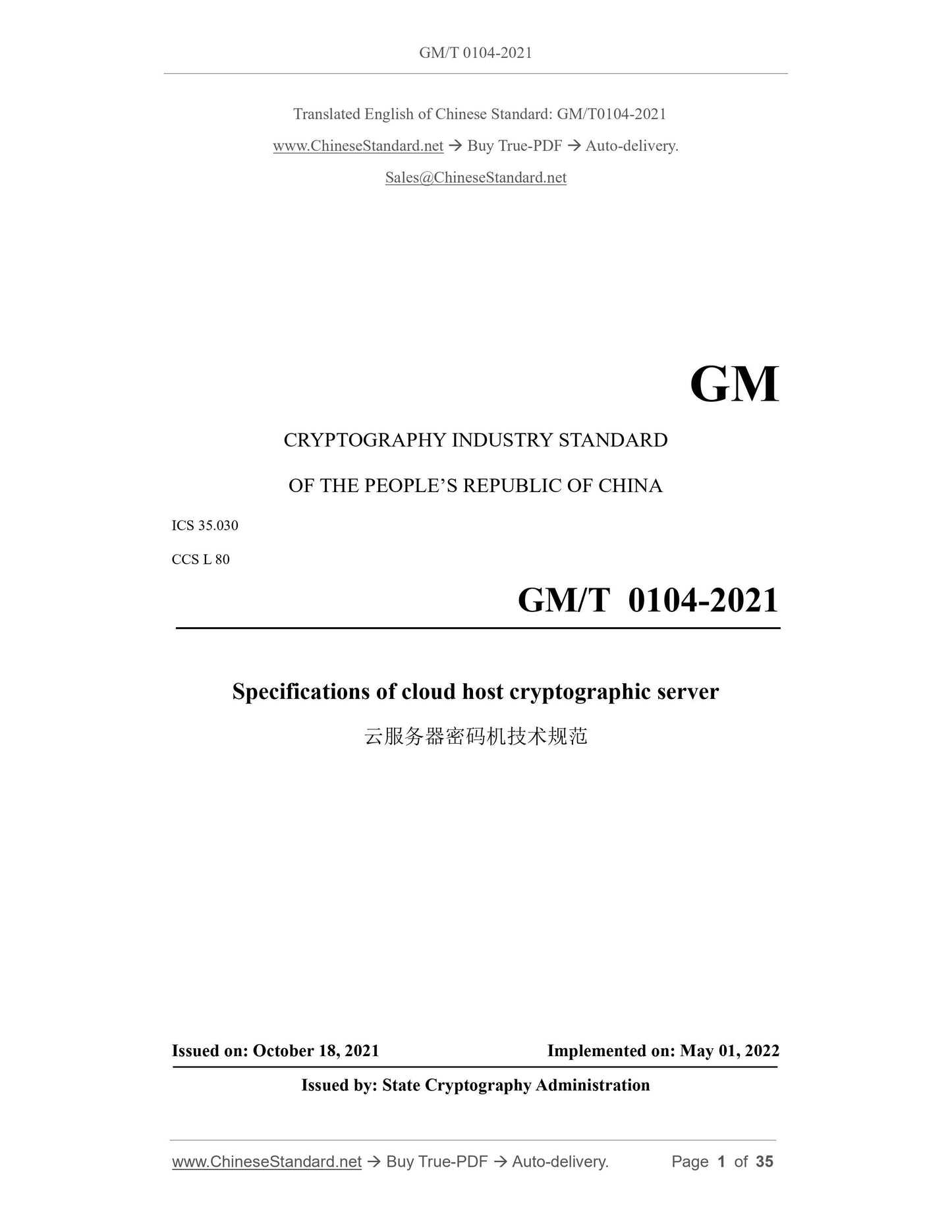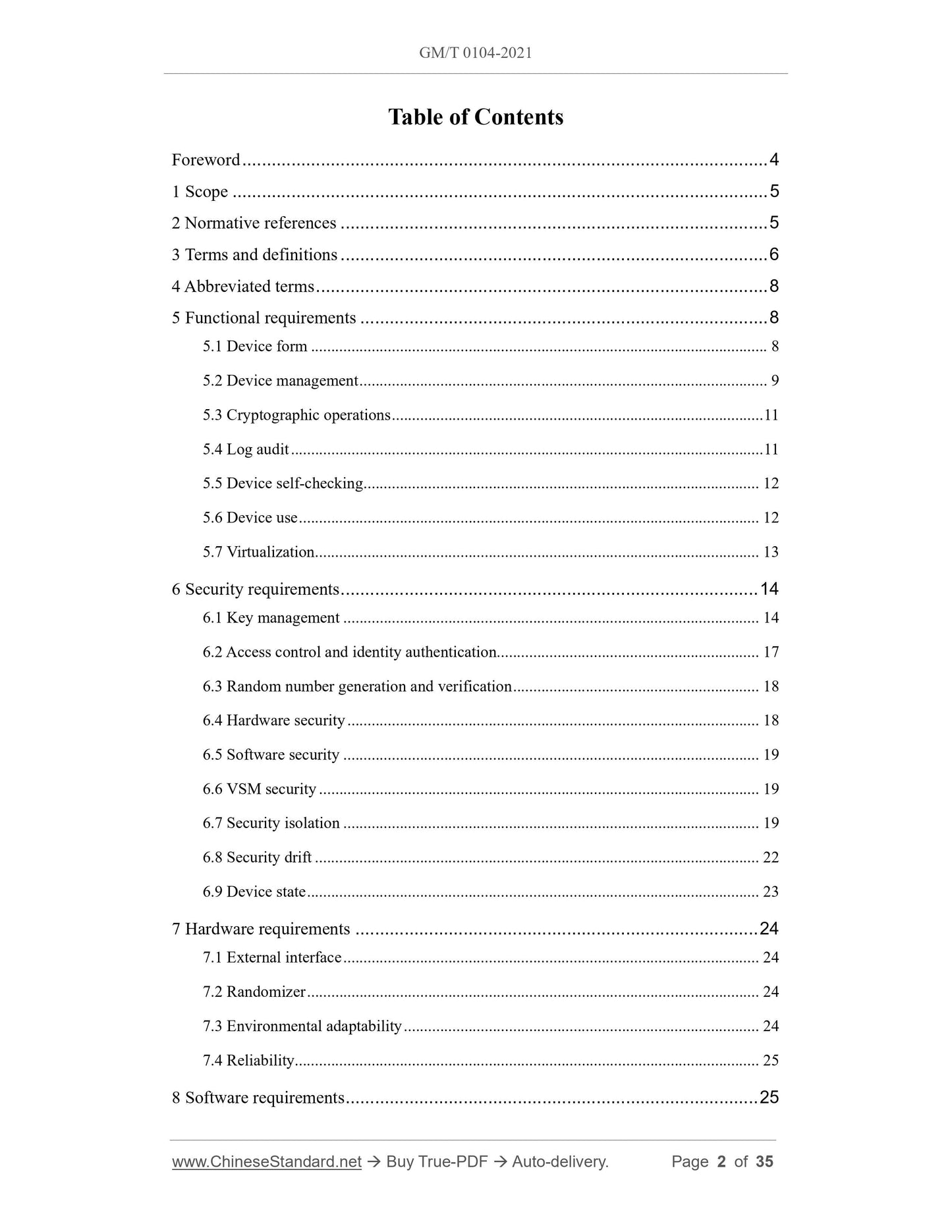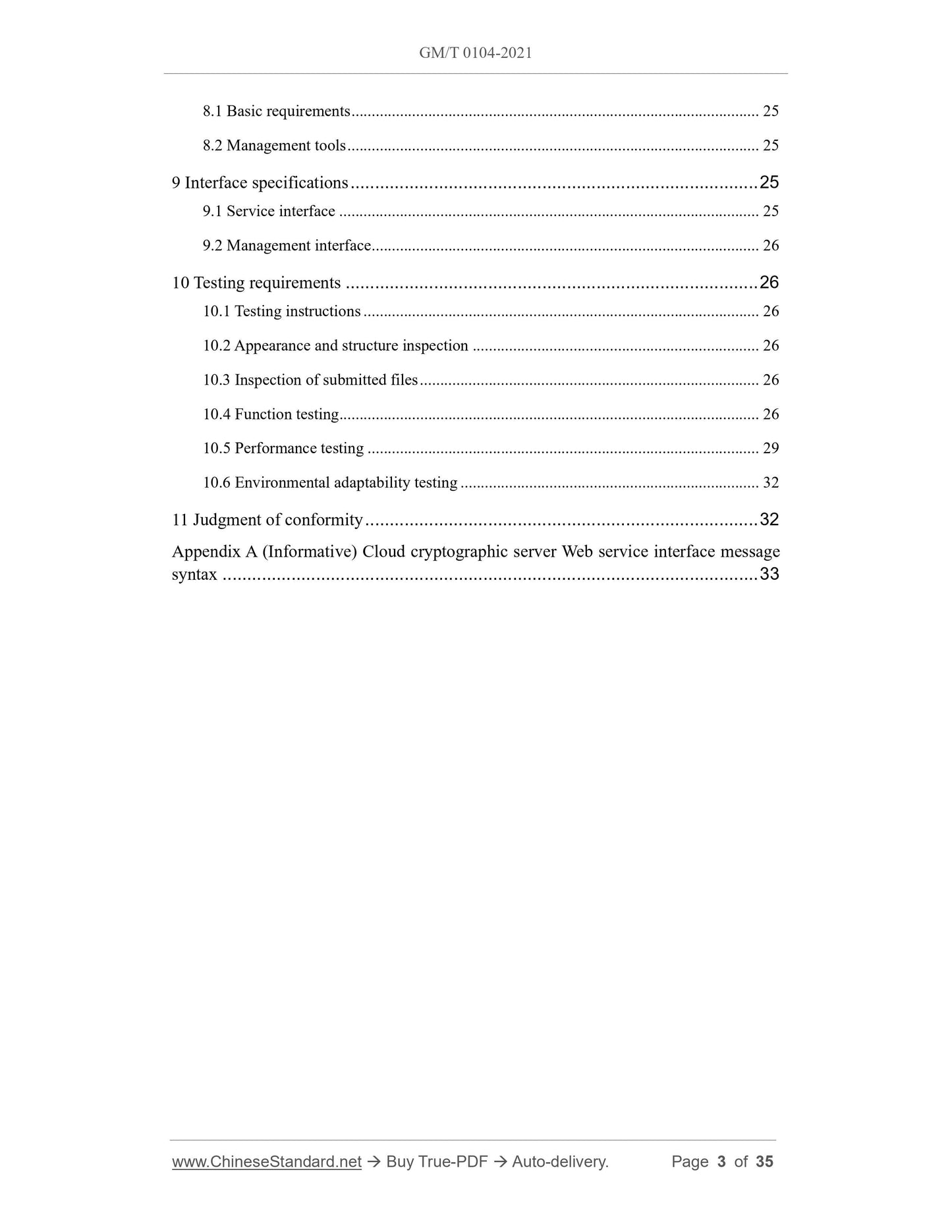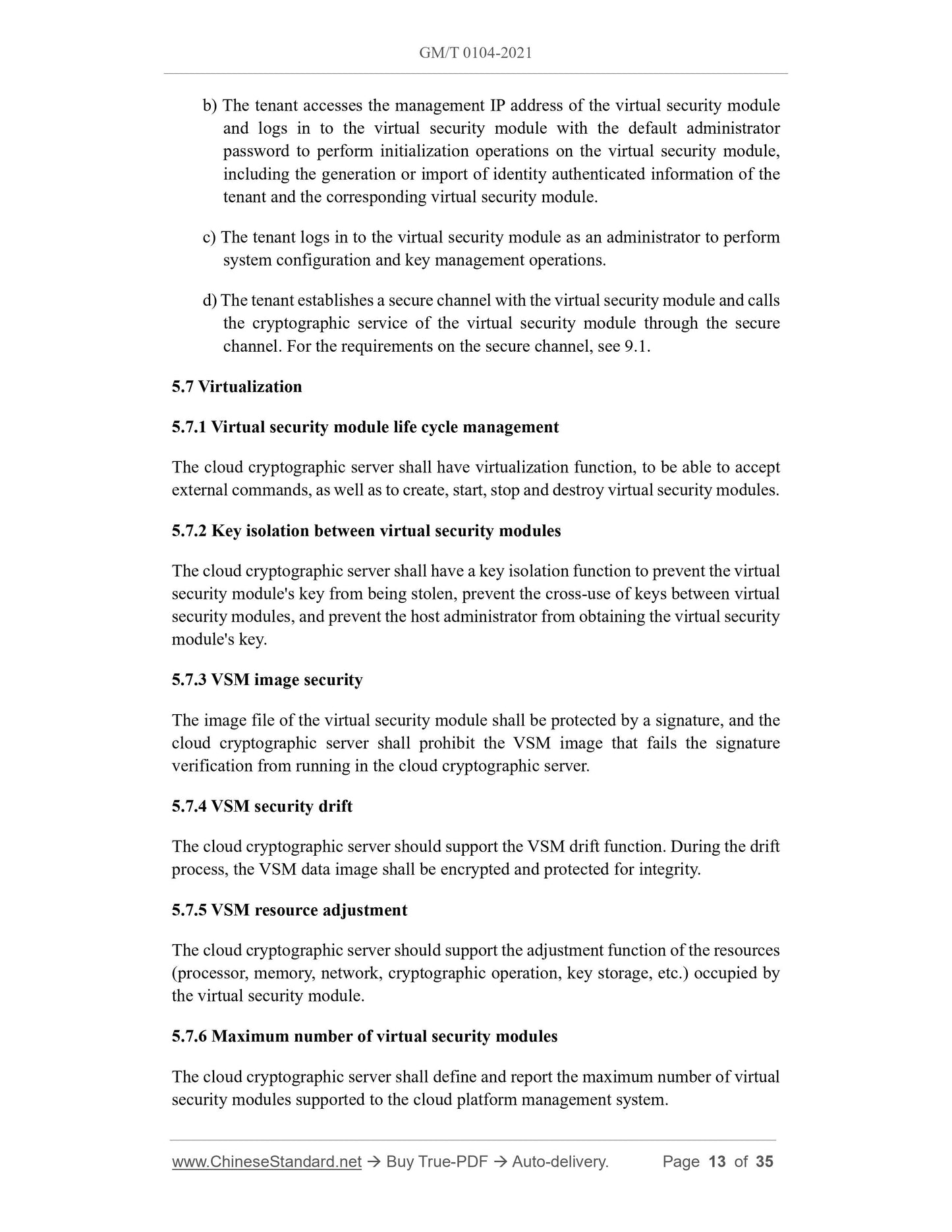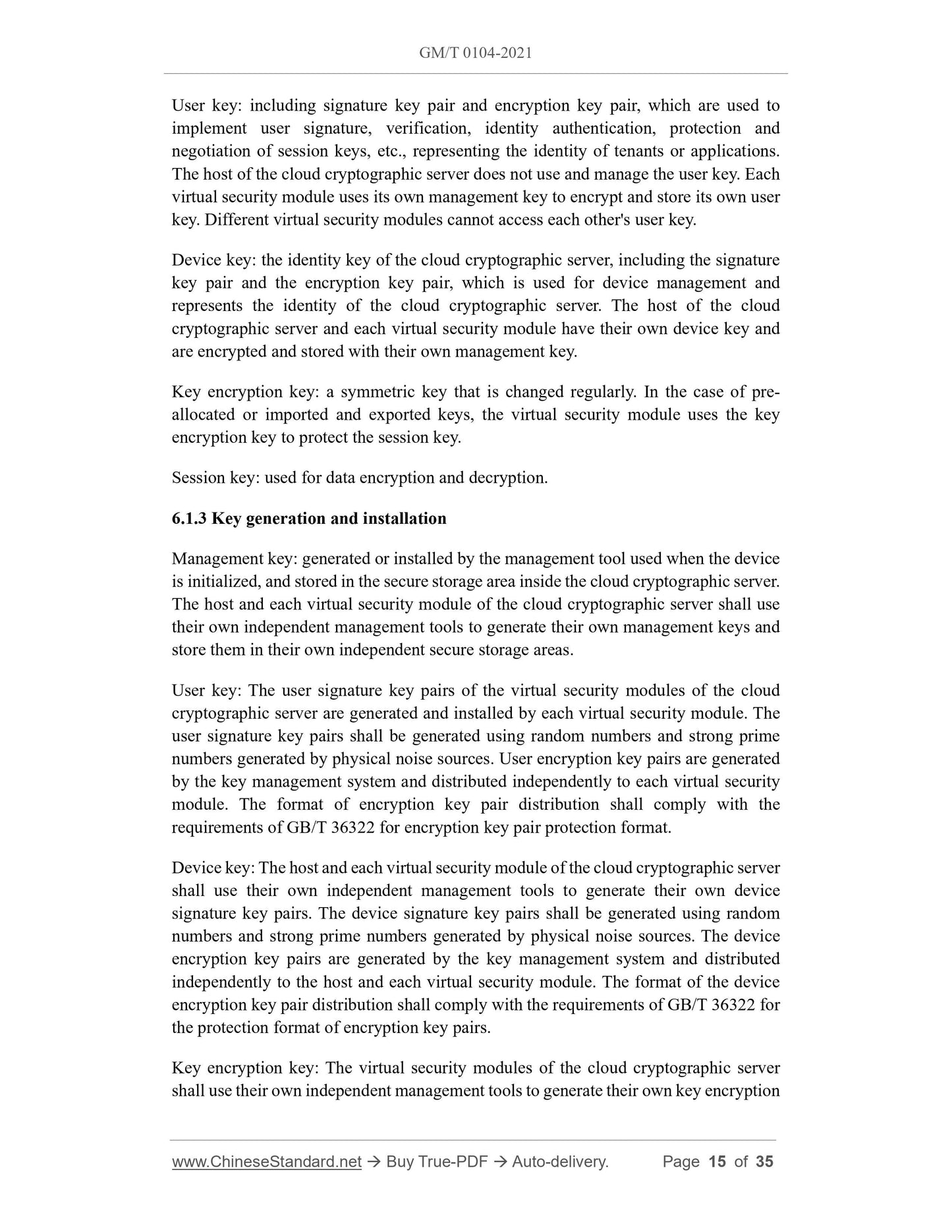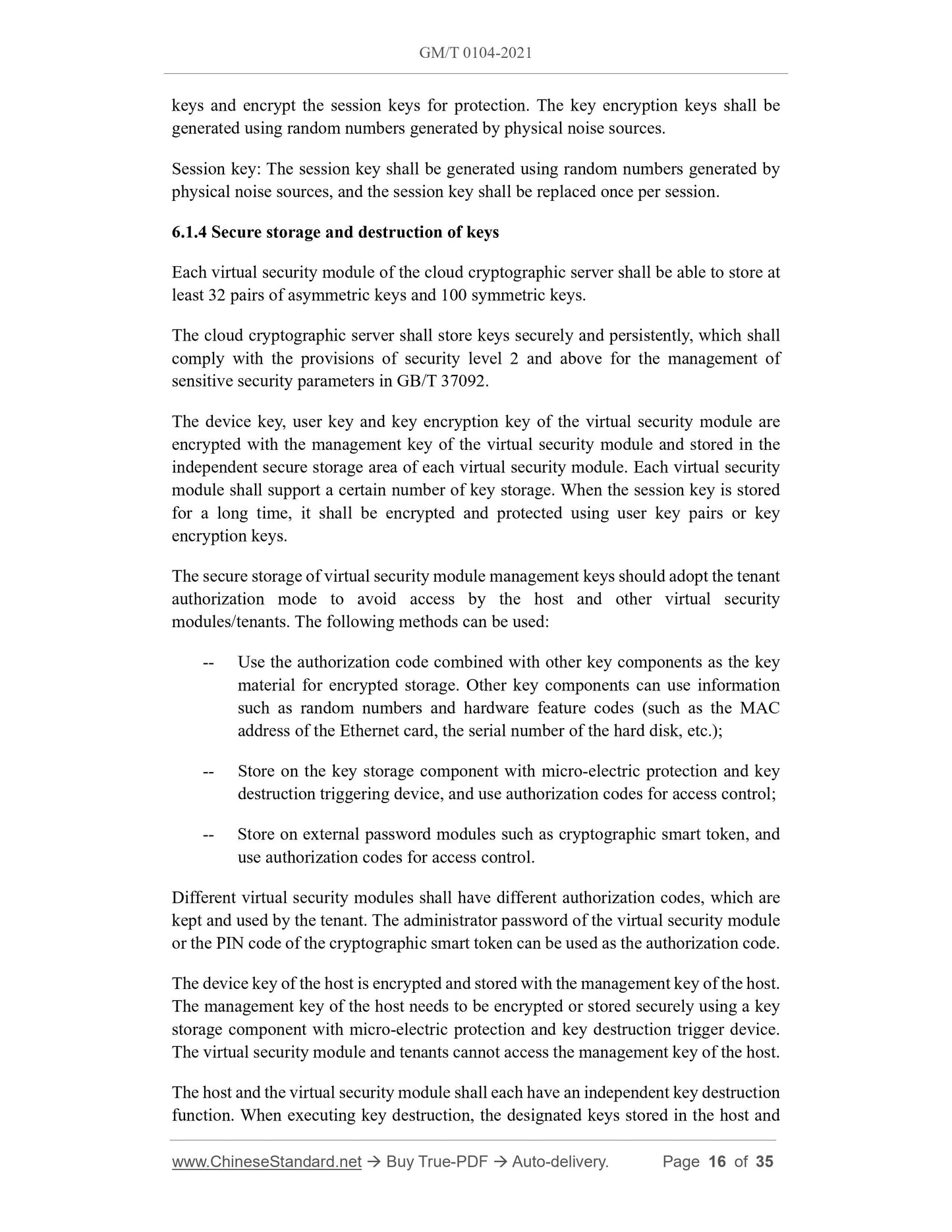1
/
of
12
www.ChineseStandard.us -- Field Test Asia Pte. Ltd.
GM/T 0104-2021 English PDF (GM/T0104-2021)
GM/T 0104-2021 English PDF (GM/T0104-2021)
Regular price
$470.00
Regular price
Sale price
$470.00
Unit price
/
per
Shipping calculated at checkout.
Couldn't load pickup availability
GM/T 0104-2021: Specifications of cloud host cryptographic server
Delivery: 9 seconds. Download (and Email) true-PDF + Invoice.Get Quotation: Click GM/T 0104-2021 (Self-service in 1-minute)
Newer / historical versions: GM/T 0104-2021
Preview True-PDF
Scope
This document defines the relevant terms of cloud cryptographic server, and specifiesthe overall structure, functional requirements, hardware requirements, software
requirements, security requirements and testing requirements of cloud cryptographic
server.
This document applies to the development and use of cloud cryptographic server, and
can also be used to guide the testing of cloud cryptographic server.
Basic Data
| Standard ID | GM/T 0104-2021 (GM/T0104-2021) |
| Description (Translated English) | Specifications of cloud host cryptographic server |
| Sector / Industry | Chinese Industry Standard (Recommended) |
| Classification of Chinese Standard | L80 |
| Word Count Estimation | 24,233 |
| Date of Issue | 2021-10-18 |
| Date of Implementation | 2022-05-01 |
| Issuing agency(ies) | State Administration of Cryptography |
Share
